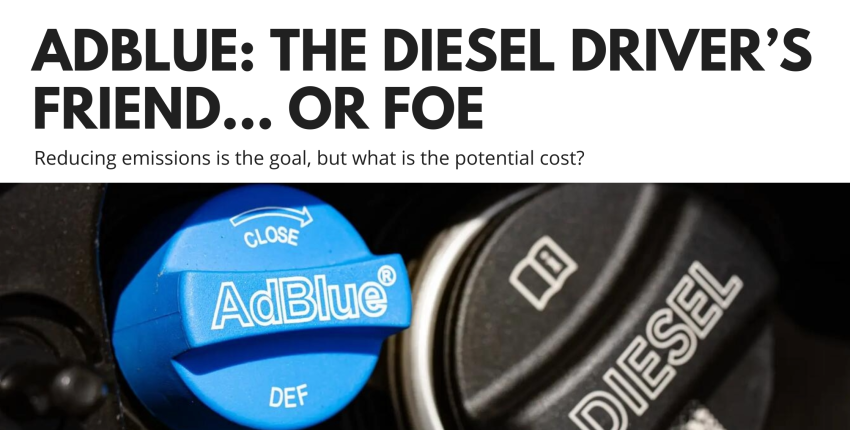
Despite ongoing scrutiny over nitrogen oxide (NOx) emissions, millions of UK drivers still rely on diesel vehicles for their practicality and economy. Central to these cleaner diesels is AdBlue, a complex emissions control system that’s far more than just a fluid top-up. With a history of widespread adoption and an aging fleet now facing increasing challenges, understanding the origins, operation, and common issues of AdBlue is no longer optional. Every diesel owner is obliged to ensure their vehicle’s efficiency, compliance, and long-term reliability.
The Evolution of Euro Emissions Standards
History lesson incoming, not the most riveting part of this article, I’m aware, but stay with me, we’re just setting the scene…
The pursuit of cleaner automotive emissions in Europe began in earnest in the 1970s; however, it wasn’t until the 90s, with the introduction of the first Euro standard, Euro 1, in 1992, that the initiative took off. This first standard mandated the use of catalytic converters for petrol cars to reduce carbon monoxide (CO) emissions. Subsequent standards, Euro 2 (1996) and Euro 3 (2000), progressively tightened limits for both petrol and diesel vehicles.
The focus intensified on diesel with Euro 4 (2005) and Euro 5 (2009), specifically targeting particulate matter (PM) and nitrogen oxides (NOx). A key development under Euro 5 was the mandatory inclusion of Diesel Particulate Filters (DPFs) for all new diesel cars from January 2011. This continuous tightening of emissions requirements, particularly for NOx, drove the development of sophisticated exhaust after-treatment systems like AdBlue (Selective Catalytic Reduction or SCR).
The Pivotal Moment: AdBlue Becomes Mandatory
The real game-changer for AdBlue was the Euro 6 emissions standard. Introduced for all new diesel cars sold from September 2015, this rule drastically cut harmful nitrogen oxide (NOx) emissions by 67% compared to previous standards. To meet this tough new target, car manufacturers had to fit systems that use AdBlue. So, if your diesel car was first registered after September 2015, it almost certainly uses an AdBlue system – and understanding this system is key to its upkeep.

How Selective Catalytic Reduction (SCR) Technology Works with AdBlue
AdBlue is a non-toxic, non-flammable, odourless, and biodegradable fluid, primarily composed of a high-purity urea solution. The SCR system operates by injecting precise, minute quantities of this ammonia-based liquid into the hot exhaust gases. Within the catalytic converter, a chemical reaction takes place, transforming harmful NOx gases into harmless nitrogen and water vapour. This process is remarkably effective, capable of reducing NOx emissions by up to 90%.

Understanding AdBlue’s composition and its chemical reaction within the SCR system goes beyond simply knowing its function; it highlights the delicate chemical balance required for effective operation. This chemical process directly explains why issues such as fluid contamination, where impurities disrupt the reaction, or crystallisation, where urea solidifies, lead to system malfunctions. It emphasises that AdBlue is not merely a passive additive but an active participant in the emissions reduction process, making its quality and proper function paramount to the vehicle’s environmental compliance and performance.
General Variations by Vehicle Age and Model
Approximately 30.74 million cars are currently dependent on independent workshops for their maintenance needs.
The average age of licensed cars in the UK continues its upward trend, reaching 9.5 years in 2024, an increase from 9.3 years in 2023 and 8 years in 2019. By the end of December 2024, this average age had further increased to 10 years. A substantial portion of the fleet is now over a decade old, with 43.4% of cars exceeding 10 years of age.
Crucially, 85% of cars on the road are now more than three years old, which is the typical age at which vehicles begin to rely on the aftermarket for servicing and repairs. This means approximately 30.74 million cars are currently dependent on independent workshops for their maintenance needs.
“Vehicles registered from 2015 to 2018 are now between 7 and 10 years old, entering an age bracket where complex emissions control systems, like AdBlue, are more susceptible to failure.”
This indicates that the UK is on the cusp of experiencing a significant wave of AdBlue system failures. This impending surge will place immense pressure on the automotive aftermarket, necessitating increased capacity, substantial investment in specialized diagnostic equipment (such as Bosch KTS or Hella Gutmann CSC-Tool systems, costing thousands of pounds ), and, critically, continuous training for technicians to competently handle these complex, often manufacturer-specific issues. The aftermarket is thus becoming the primary frontline for AdBlue system maintenance and repair.
Current Snapshot of UK Diesel Fleet
-
- As of 2024, there were 11.6 million diesel passenger vehicles on UK roads.
-
- This represents roughly a third of the total UK car parc.
-
- The estimated Number of AdBlue-equipped diesel vehicles in the UK is approximately 5.6 million.
-
- This equates to approximately 48.5% of the total 11.6 million diesel vehicles currently on UK roads.
-
- The average age of a licensed vehicle in the UK at the end of 2024 was 10 years.
-
- AdBlue systems became a fundamental requirement for new diesel cars sold from September 2015.
-
- This means the earliest AdBlue-equipped vehicles are now 8-9 years old.
-
- The average annual mileage for diesel cars in 2023 was 8,300 miles.
-
- Meaning, as of today, a typical AdBlue-equipped diesel vehicle at the average age would have accumulated approximately 79,000 to 83,000 miles.
-
- Some manufacturers have issued warranties on heating elements in the AdBlue system for 10 years or 100,000 miles.
-
- However, some vehicles start to experience AdBlue system problems under 40,000 miles.
-
- For certain models, particularly popular commercial vehicles like the Citroen Berlingo, Jumpy, Jumper, and Peugeot Partner, Expert, and Boxer, the AdBlue tank is a sealed, non-repairable unit. A replacement can cost between £2,000 and £3,000.
In summary, while a precise percentage is not available, a substantial portion of the 5.6 million AdBlue-equipped diesel vehicles in the UK are now entering an age where system failures are becoming increasingly common, with repair costs potentially making older vehicles economically unviable.
Impending “Wave of Failures”
Vehicles from the 2015-2018 period (now 7-10 years old) are entering an age bracket where complex emissions control systems, like AdBlue, are more susceptible to failure.
This indicates that the UK is on the cusp of experiencing a significant wave of AdBlue system failures.
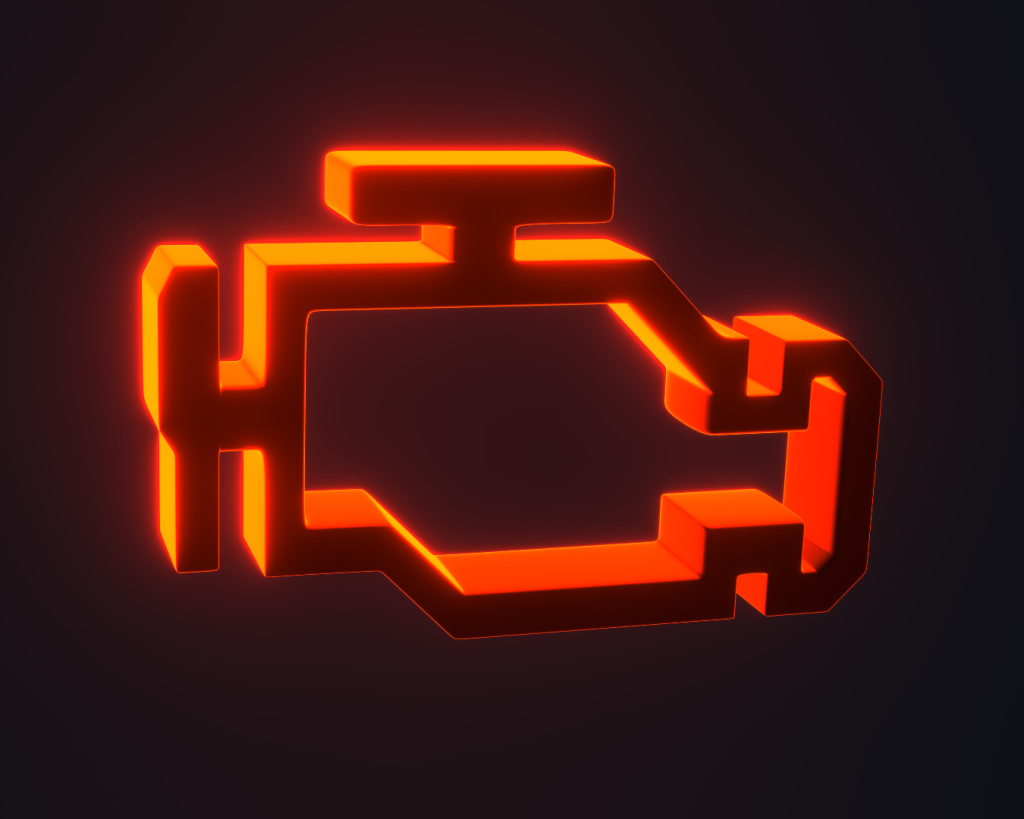
Which Major Manufacturers Adopted AdBlue Systems
Audi
-
- Q7
-
- A4 Saloon
-
- A5 Sportback
-
- A6 Avant
-
- A7 Sportback
-
- A8
-
- Q3
-
- Q5
Land Rover
-
- Discovery
-
- Discovery Sport
-
- Range Rover Evoque
-
- Range Rover
-
- Range Rover Sport
BMW
-
- 5 Series Saloon & Touring
-
- 7 Series Saloon
-
- X5
-
- X6
Jaguar
-
- XE diesel variants
-
- XF diesel variants
-
- XJ diesel variants
Mercedes-Benz
-
- S-Class Saloons
-
- C-Class Saloons
-
- E-Class Saloons
-
- GLC
-
- GLE
-
- Sprinter
-
- Vito
-
- CLS
-
- G-Class
Volkswagen
-
- Caddy
-
- Passat
-
- Passat Alltrack
-
- Tiguan
-
- Touareg
-
- Transporter
-
- California
-
- Caravelle
Citroen
-
- Berlingo
-
- Jumpy
-
- Jumper
-
- C3
-
- C4
-
- C5
-
- Relay
Peugeot
-
- 208
-
- 2008
-
- 308
-
- 308 SW
-
- 3008
-
- 508
-
- 5008
-
- Partner Tepee
-
- Traveller
-
- Partner
-
- Expert
-
- Boxer
Ford
-
- Focus
-
- Mondeo
-
- Kuga
-
- Fiesta
-
- Puma
-
- Galaxy
-
- S-Max
-
- Edge
-
- EcoSport
-
- Transit
-
- Ranger
-
- Tourneo
Seat
-
- Leon
-
- Ateca
-
- Arona
-
- Ibiza
-
- Tarraco
-
- Alhambra
Skoda
-
- Octavia
-
- Superb
-
- Kodiaq
-
- Karoq
-
- Kamiq
-
- Scala
-
- Fabia
-
- Yeti
Nissan
-
- Qashqai
-
- X-Trail
-
- Juke
-
- Pulsar
-
- Navara
-
- NV300
-
- NV400
-
- NV250
The Achilles’ Heel: Common AdBlue System Issues
The Usual Suspects
AdBlue systems, while vital for reducing emissions, are prone to a range of common malfunctions. Understanding these typical failure points is key for both owners and technicians.
-
- AdBlue Crystallisation: This is arguably the most prevalent issue. AdBlue is a urea-water solution, and when exposed to air or extreme temperatures (below -11°C or above 30°C), the water evaporates, leaving behind solid urea crystals. This crystalline build-up can clog filters, block injectors, and significantly reduce the efficiency of the SCR system. Frequent short journeys, where the SCR system may not reach its optimal operating temperature, can exacerbate this problem.
-
- Fluid Contamination: The introduction of low-quality, expired, or contaminated AdBlue (for example, mixed with dirt, fuel, oil, or water) can severely damage the SCR system components. This contamination reduces the fluid’s effectiveness, leading to increased NOx emissions and potential damage to catalysts and sensors.
-
- Sensor Failures: The AdBlue system relies on various sensors, including level sensors within the tank and NOx sensors in the exhaust. These electronic components can fail, leading to inaccurate readings or false warning lights, even if the AdBlue fluid level is correct. Replacing a NOx sensor alone can range from approximately £167 to £869.
-
- Pump and Injector Malfunctions: The AdBlue pump is responsible for delivering the fluid to the injector, which then sprays it into the exhaust stream. Both the pump and injector are susceptible to mechanical wear, electrical failure, or blockages caused by crystallisation. A faulty pump may not provide sufficient pressure, hindering the system’s operation. Injector blockages, in particular, lead to poor spray patterns and reduced efficiency.
-
- Software Glitches: In some instances, the physical components of the AdBlue system may be functioning correctly, but the vehicle’s Engine Control Unit (ECU) can develop a software glitch. This can result in persistent warning messages that require a manual reset or a software update by a qualified technician.
-
- AdBlue Tank Heater Failure: AdBlue freezes at temperatures below -11°C. Modern vehicles are equipped with heating systems to prevent this, but these heaters themselves can fail. A malfunctioning heater can lead to the AdBlue freezing and subsequent crystallisation, causing system malfunction.
“Many AdBlue issues are not isolated but are interconnected. For example, a failed heater can lead to the fluid freezing, which then causes crystallisation, ultimately clogging injectors and damaging pumps. This interconnectedness means that diagnosing AdBlue issues is rarely straightforward and often demands specialised diagnostic tools and deep technical expertise. A seemingly simple dashboard warning light can often conceal a cascade of underlying problems, leading to complex and potentially costly repairs.”
Spotlight on French Workhorses
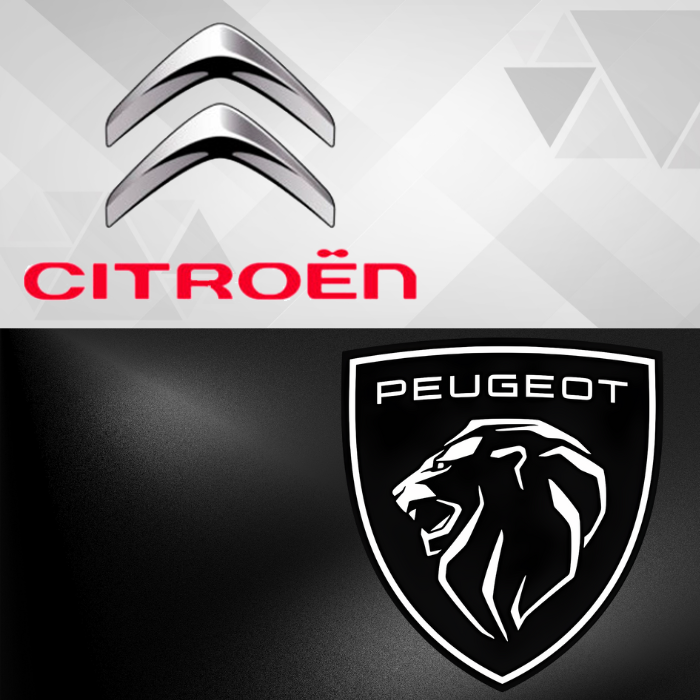
Popular Citroën and Peugeot light commercial vehicles (e.g., Berlingo, Partner, Jumpy, Expert, Jumper) with 1.5 HDi, 1.6 HDi, and 2.0 HDi engines are highly susceptible to AdBlue system failures. A key issue is their sealed AdBlue tank design, meaning a fault with internal components like the float sensor, pump, or heater requires replacing the entire unit, not just the faulty part. This leads to substantial repair costs, typically £2,000-£3,000, far exceeding the hundreds of pounds for individual component fixes in other vehicles.
Owners frequently face persistent warning messages such as “Emissions Fault” or “Starting Impossible” countdowns, even after refilling. This systemic vulnerability imposes a significant financial burden, often making repairs uneconomical for aging vehicles.
Common fault codes, such as P20E8 (indicating insufficient urea pressure) and P2BAD/P20EE (general AdBlue system errors), are frequently reported by Peugeot owners. Citroen owners often encounter “Defective AdBlue Level Sensor” messages. The recurring issue of non-repairable sealed AdBlue tanks in these popular commercial vehicles, coupled with the high replacement costs, suggests a design philosophy that prioritises modular replacement over repairability. For owners, particularly those with older vans whose market value might be less than the repair cost, this design can feel like a form of “built-in obsolescence.” This economic pressure often drives owners to consider legally dubious “AdBlue delete” solutions, creating a significant ethical and regulatory challenge for the automotive industry.
The Legal Hammer: Government-Mandated Immobilisation
This is where things get serious for diesel owners. The consequences of ignoring AdBlue warnings are not merely a manufacturer’s choice; they are a direct result of stringent government legislation imposed on vehicle manufacturers. Specifically, Commission Regulation (EU) 2018/1832, Annex VIII, outlines detailed requirements for vehicles using reagent (AdBlue) for exhaust after-treatment systems. This regulation mandates the implementation of a “driver inducement system” to ensure the emissions control system functions at all times, preventing operation with an empty reagent tank or a compromised system.

Warning System
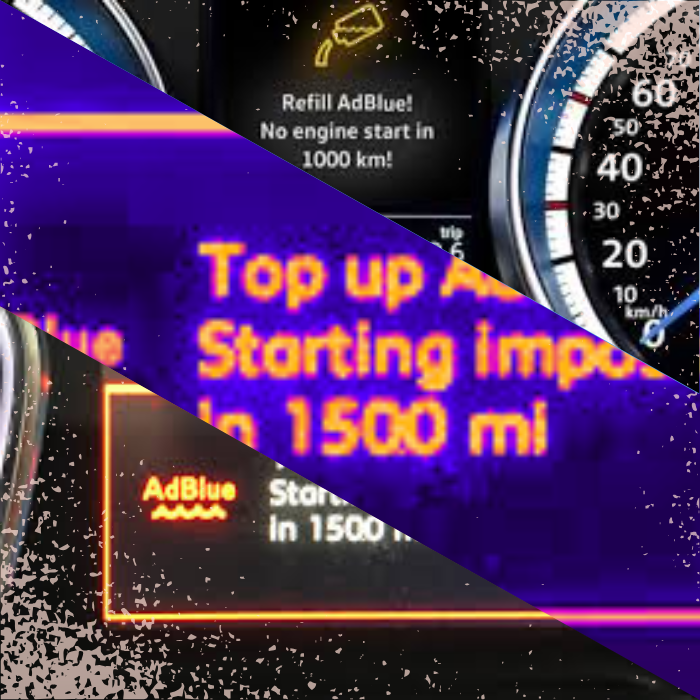
Vehicles must display clear visual warnings for low AdBlue levels, incorrect fluid quality, or dosing malfunctions. These warnings escalate in intensity as the problem persists and cannot be easily ignored or turned off until the issue is rectified. The warning system must activate at least 2,400 km before the AdBlue tank is empty, or when the level drops to 10% of capacity, whichever is earlier.
Driver Inducement
If the AdBlue system issues (such as incorrect reagent, significant dosing deviation, or interrupted dosing) are not corrected within a specified distance (typically 50 km after the initial warning), the driver inducement system activates.
Manufacturers have several options for this inducement, but all lead to severe operational limitations:
No Engine Restart
The vehicle will prevent engine restarts after a certain countdown of distance or number of restarts. If the AdBlue tank becomes completely empty, restarts are prevented immediately.
No Start After Refuelling
The vehicle simply won’t start after a refuelling event if the inducement is activated.
Fuel-Lockout
The fuel filler system can be locked to prevent refuelling.
Performance Restriction (Limp Mode)
The vehicle’s speed is severely limited, often to as low as 50 km/h, either gradually or after an engine restart. This is designed to get you home or to a garage, but no further.
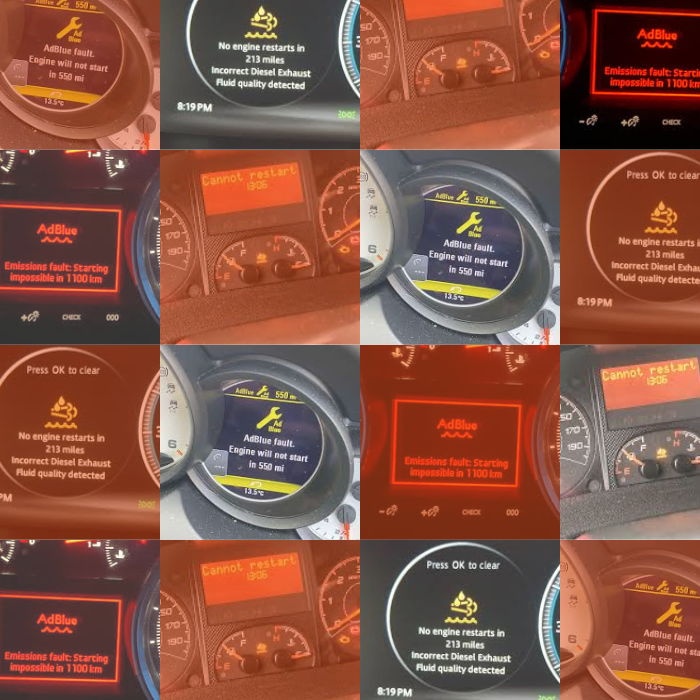

Legal Obligation
Manufacturers are legally required to inform new vehicle owners that if the AdBlue system is not functioning correctly, the driver will be warned, and the inducement system will prevent the vehicle from starting. Furthermore, the legislation explicitly states that using a vehicle that does not consume the required reagent for emission reduction may be a criminal offense.
This means that the “limp home” mode and eventual “no-start” condition are not arbitrary design choices by car makers; they are direct consequences of European and subsequently UK law designed to enforce environmental compliance. Ignoring these warnings is not just a risk to your vehicle’s performance, but a direct challenge to regulatory requirements, with potentially severe legal and operational repercussions.
Final Thoughts…
The question I posed at the beginning of the article was, AdBlue, Diesel drivers’ friend… or foe, and the balance probably falls somewhere on the side of friend to the environment, cost to the driver. When an AdBlue or other SCR system fails, there are no warning signs and no options to ignore it. It quickly becomes the most pressing concern on your list of priorities, or risk a fully immobilised vehicle thanks to those pesky government-mandated systems.
Despite a sharp decline in new diesel sales, millions of AdBlue-equipped vehicles remain on UK roads, forming an aging fleet that increasingly relies on the aftermarket for complex diagnostics and repairs. As these vehicles age, common issues like AdBlue crystallization, fluid contamination, sensor failures, and pump/injector malfunctions are becoming prevalent, often leading to costly repairs, particularly for Citroen and Peugeot models with their non-repairable sealed tanks.
Don’t let your AdBlue system issues stop you in your tracks.
CCM can help keep you running smoothly with options for AdBlue tank replacements and system repairs.

